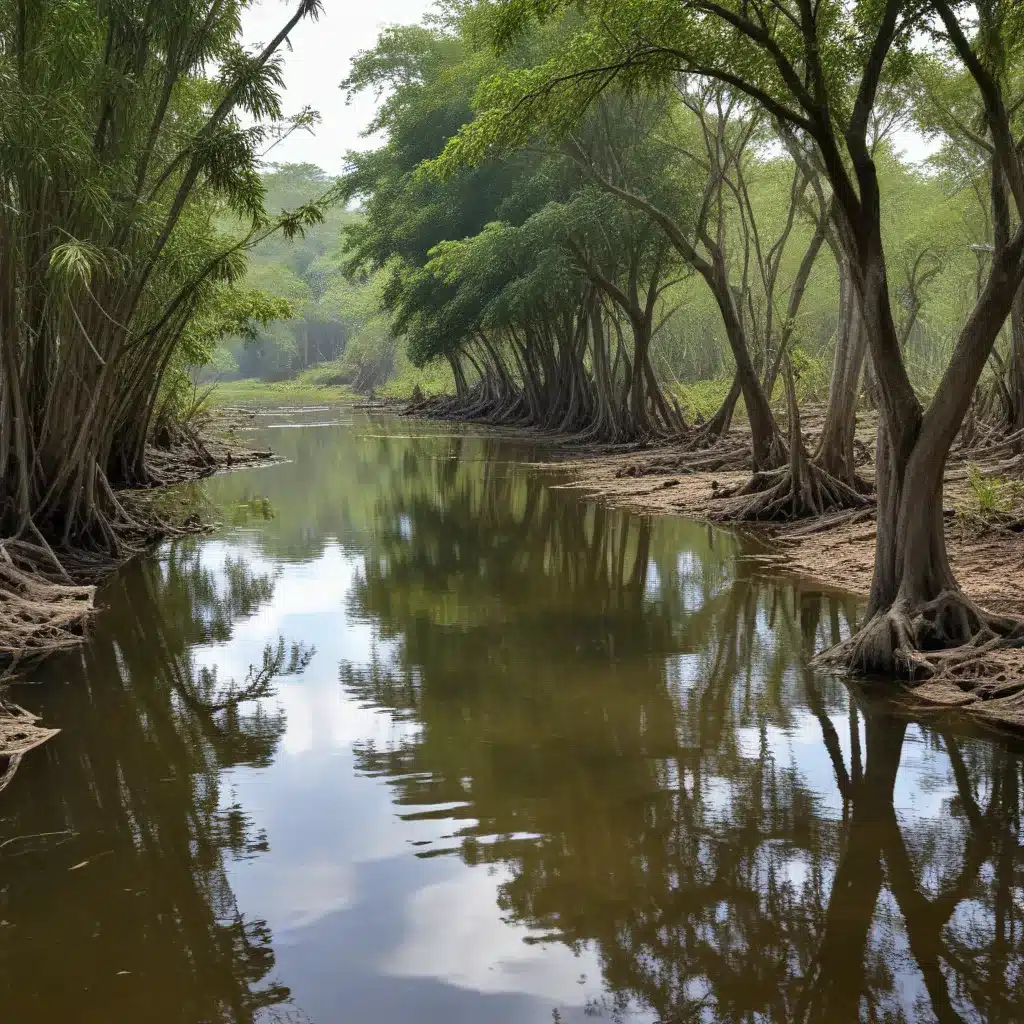
As an experienced avian caretaker and expert in the field, I’m thrilled to share an in-depth look at the captivating Caroni Swamp in Trinidad. This unique wetland ecosystem is ever-evolving, constantly adapting to environmental changes and human impacts. Let’s dive in and explore the wonders of this remarkable avian habitat.
Geographical Features
Wetland Ecosystem
The Caroni Swamp is the largest mangrove wetland in Trinidad, covering an impressive 5,996 hectares along the country’s western coast. This expansive area comprises a complex network of waterways, lagoons, and mangrove forests – a rich, diverse ecosystem that is vital for protecting the coastline from erosion and providing a home for numerous wildlife species.
Mangrove Forests
The swamp’s mangrove forests are the lifeblood of this remarkable habitat. These resilient trees, with their intricate root systems, thrive in the brackish waters, playing a crucial role in maintaining the delicate balance of the ecosystem. The towering red mangroves, with their distinctive aerial roots, create a lush, labyrinthine canopy that shelters a multitude of species, from nesting birds to thriving marine life.
Tidal Flows
The Caroni Swamp is heavily influenced by the ebb and flow of the tides. These regular fluctuations in water levels shape the swamp’s unique character, determining the distribution of vegetation, the availability of resources, and the movement patterns of the resident wildlife. Understanding and adapting to these tidal rhythms is essential for the swamp’s inhabitants, as well as for the humans who visit and interact with this captivating environment.
Avian Biodiversity
Waterfowl Species
The Caroni Swamp is renowned for its diverse avian population, with over 270 bird species recorded within its boundaries. One of the swamp’s most iconic residents is the Scarlet Ibis, one of Trinidad and Tobago’s national birds. These vibrant, crimson-hued waders are a sight to behold as they congregate in large numbers to roost in the mangrove canopy during the evening hours.
Wading Bird Populations
Alongside the Scarlet Ibis, the Caroni Swamp is home to a rich array of wading bird species, including egrets, herons, and spoonbills. These graceful, long-legged birds wade through the shallow waters, foraging for a variety of aquatic prey. Their presence is a testament to the swamp’s bountiful food resources and the complex food webs that sustain this thriving ecosystem.
Endangered Bird Habitats
While the Caroni Swamp boasts an impressive diversity of avian life, some species face increasing threats to their habitats. The mangrove forests, which provide crucial nesting and roosting sites for many birds, are vulnerable to coastal erosion, pollution, and human encroachment. Preserving these sensitive habitats is crucial for safeguarding the long-term survival of endangered species and maintaining the swamp’s ecological balance.
Ecological Changes
Coastal Erosion
One of the pressing challenges facing the Caroni Swamp is the issue of coastal erosion. As rising sea levels and extreme weather events become more frequent, the delicate balance of the swamp’s ecosystem is being disrupted. The mangrove forests, which serve as natural barriers against erosion, are struggling to keep pace with the changing tides, putting both the wildlife and the surrounding communities at risk.
Habitat Restoration
In response to these environmental threats, conservation efforts have focused on habitat restoration within the Caroni Swamp. This includes initiatives to replant and reinforce the mangrove forests, as well as to improve water quality and address sources of pollution. By taking a proactive approach to ecosystem management, these efforts aim to safeguard the swamp’s biodiversity and ensure its long-term resilience.
Adaptive Ecosystems
Despite the challenges, the Caroni Swamp has demonstrated its remarkable ability to adapt to changing conditions. The swamp’s diverse plant and animal communities have evolved intricate survival strategies, allowing them to thrive in the face of environmental stressors. This adaptive capacity is a testament to the inherent resilience of this remarkable wetland ecosystem, and it offers hope for its continued preservation and enrichment.
Conservation Efforts
Wildlife Preservation
Preserving the Caroni Swamp’s rich biodiversity is a top priority for conservation organizations and government agencies. This involves comprehensive monitoring and research programs to understand the needs and behaviors of the swamp’s resident species, as well as targeted interventions to protect vulnerable populations. By working closely with local communities and engaging in sustainable management practices, these efforts aim to safeguard the swamp’s wildlife for generations to come.
Ecotourism Initiatives
The Caroni Swamp has also become a hub for ecotourism, offering visitors the opportunity to experience the swamp’s natural wonders firsthand. Boat tours and birdwatching expeditions allow tourists to immerse themselves in the swamp’s unique environment, fostering a deeper appreciation for its ecological significance. These ecotourism initiatives not only generate revenue to support conservation efforts but also serve as a powerful educational tool, inspiring visitors to become advocates for the Caroni Swamp’s preservation.
Sustainable Management
Effective management of the Caroni Swamp requires a delicate balance between human activity and environmental protection. This involves the implementation of sustainable practices, such as regulating boat traffic, controlling invasive species, and enforcing anti-poaching measures. By working collaboratively with local stakeholders, including residents, businesses, and conservation organizations, the authorities strive to ensure that the swamp’s resources are utilized in a responsible and ecologically-sound manner.
The Caroni Swamp is a true marvel of nature, a dynamic and ever-evolving ecosystem that continues to captivate and inspire all who encounter it. As an experienced avian caretaker, I’m in awe of the swamp’s remarkable biodiversity and the dedicated efforts to preserve this unique habitat. Whether you’re a birdwatcher, an ecotourist, or simply someone who appreciates the beauty and importance of wetland ecosystems, the Caroni Swamp is a destination that should be on your radar.
To learn more about the Caroni Swamp and how you can support its conservation, I encourage you to visit Mika Birds Farm, a leading resource for all things avian. There, you’ll find a wealth of information, practical advice, and opportunities to get involved in the effort to protect this remarkable natural treasure.


